![]()
|
|
|
|
|
Stoke-on-Trent - photo of the week |
Advert of the Week
Potworks of the Week
1986-2011, 25th Anniversary National Garden Festival,
Stoke-on-Trent.
|
SUNDAY the 1st May 2011 marked the 25th anniversary of the opening of the National Garden Festival in Stoke-on-Trent – and the seeds were sown for one of North Staffordshire's highest-profile commercial areas. The festival, mainly on the site of Shelton Steelworks, transformed a desolate area into an attraction which brought hundreds of thousands of people to North Staffordshire for the first time. At the opening ceremony, Conservative Environment Secretary Kenneth Baker predicted 5,000 people would work on the trade zone created when the festival closed. Twenty-five years later, 6,200 people work in Festival Park and adjoining Etruria Valley – about 3,000 of them on the original festival site. Sentinel Newspaper |
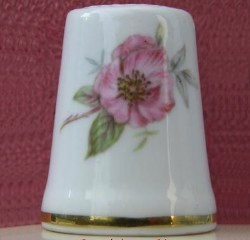 |
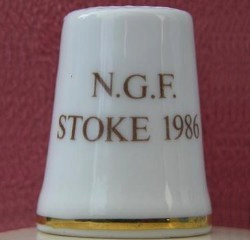 |
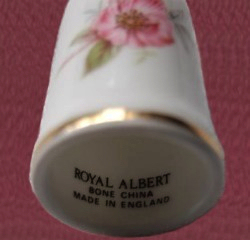 |
Royal Albert thimble made to commemorate the 1986 Stoke Garden Festival
| The Stoke-on-Trent National Garden Festival was the second of Britain's National Garden Festivals. It was held in the city from 1 May to 26 October 1986, and was opened by
Her Majesty the Queen.
Preparation of the site involved the reclamation of land formerly occupied by the Shelton Bar steelworks (1830-1978) at Etruria about two miles north-west of the city centre, between Hanley and Burslem. The reclamation cost £5 million, and the Festival cost £18 million. The reclaimers of the Festival site had to contend with highly contaminated and mine shafted land. British Steel's Shelton Bar steel rolling mill was adjacent to the Festival Site and remained in use, finally closing in 2000. |
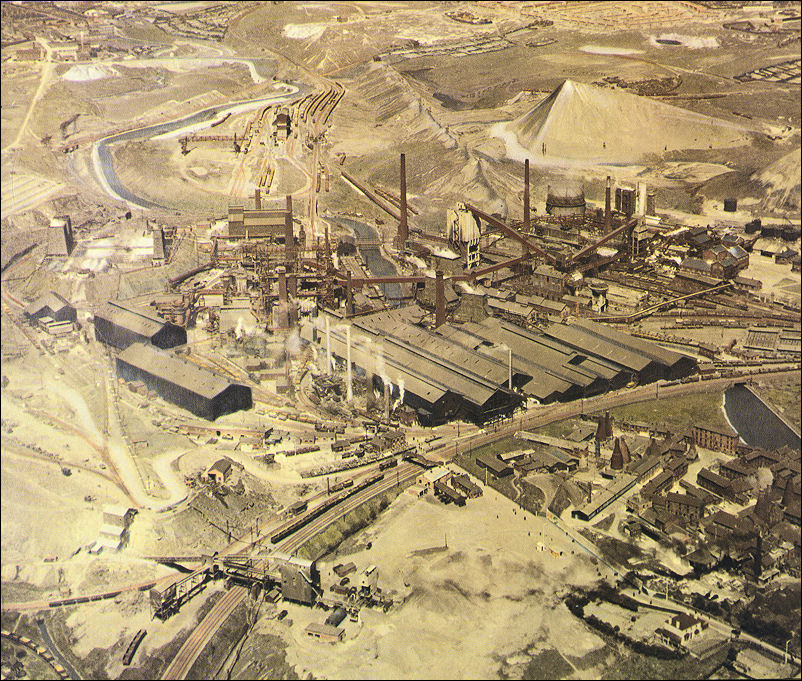
Shelton Steel Works
c.1950
The utter devastation
of the landscape can clearly be seen.
At the bottom right is the Wedgwood pottery works
the Trent & Mersey canal runs through the site (bottom right to
top)
the Potteries Loop Line Railway separates the site of the Shelton Steel
Works and Wedgwood pottery works
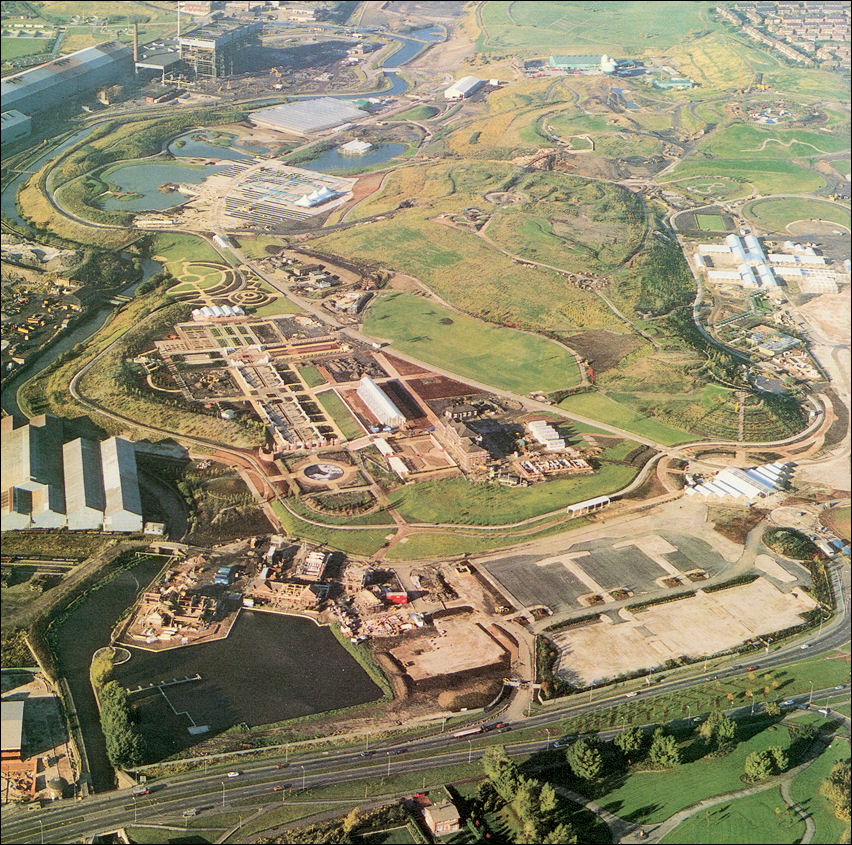
Arial view of the Festival
Site - taken seven months before the opening
to the left is the Trent & Mersey
Canal and bottom left is the marina, beyond the canal is the remaining part of
British Steel, Shelton Works, which continued to roll steel until April 2000.
At the bottom of the photo is the A53 Etruria Road, below the road is Etruria
Park.
Etruria Hall can be seen in the approximate middle of the picture.
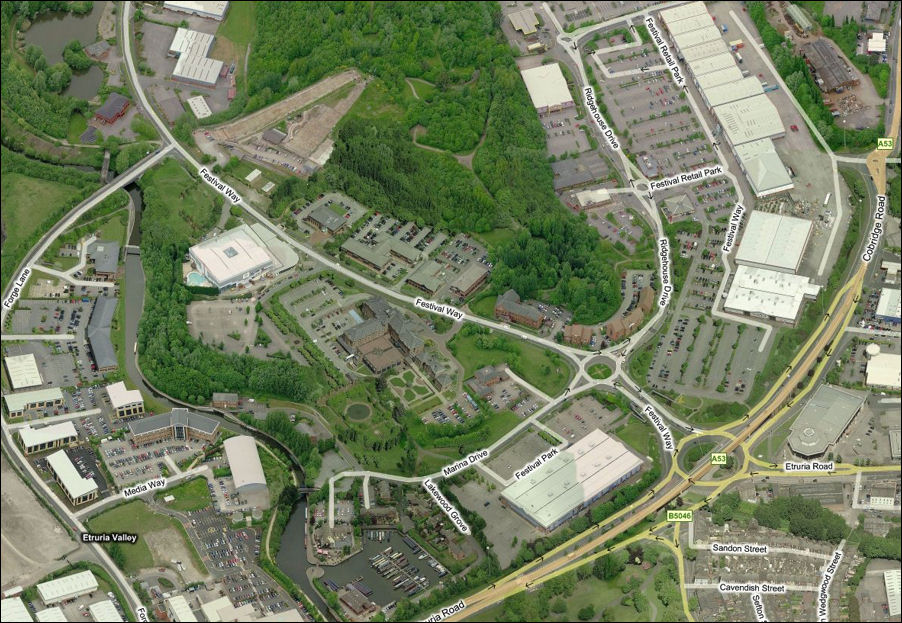
Festival Park complex in 2010
- Bing Maps
The canal runs to the left of the picture and the A53 Etruria Road to the bottom.
Some of the features from the
1986 Fesival can still be seen. The site has been successfullyfor
retail, leisure,
commercial and housing use.
In 2011 some 6,200 people work in Festival Park and adjoining Etruria Valley – about 3,000 of them on the original festival site.
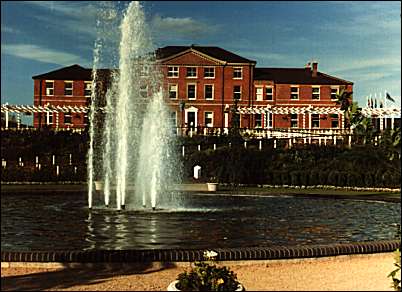 Wedgwood's Etruria Hall - used as the Festival Headquarters Etruria Hall was constructed for Josiah Wedgwood between 1768 and 1771 to a design produced by Joseph Pickford on rising ground midway between the factory and the Ridge House. The house was clearly visible from the other side of the valley, a conscious expression of the wealth and social standing of its owner. As Wedgwood’s family increased in size preparations were made for extending the house and in 1780 two wings, two stories in height, joined by a single story corridor were added to the Hall. After the Festival the Hall became part of the Moat House Hotel. |
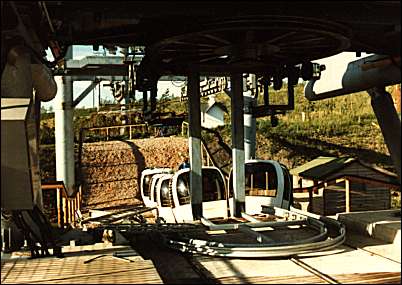 The cable cars The cable car ride extended over 640 metres, rising to a height of 50 meters. Eighteen gondolas traveled in groups of three, pausing on the way up and again on the return route, to give a bird's eye view of the site. |
 The Cottage and Wild Flower Garden |
 The Wooden Fort |
 One of the trains from the Shelton Steelworks |
 Small scale Blackpool Tower (which is itself a model of the Eiffel Tower) The cable cars can be seen in the background. |
|
Festival Park - the site
today:
The main site was completed in 1995, and is now known as Festival Park. It was, for the most part, sympathetically treated by St. Modwen Properties who had taken on its management and development. Much of the parkland, pools and trails have been retained as public open space, and are maturing very well. Some of the gardens, such as the Moorlands Heather Rock Garden and The Rocky Valley, survive with their planting scheme relatively intact. Although most wooden structures have been left to return to nature, Festival Park is actively maintained by groundsmen. Some sculpture and a large Welsh slate water feature still remains, as does the full-size stone circle. The huge wooden suspension bridge across a wooded ravine remains and can still be used. The complex network of paths is maze-like, there is no signage, and it is very easy to get lost. There is now a large 'out-of-town' retail park on one side of the site - on what was the Festival's car-park and public market area - that now merges into the lower reaches of the city-centre. Elsewhere, numerous low-rise offices nestle in the parkland and around the pools of Festival Park. There is a large marina for narrowboats. Along the main road on the western edge of the site is the large Waterworld indoor swimming complex, a ski-slope, a ten-screen Odeon cinema, a ten-pin bowling alley, and a toboggan run. The Sentinel newspaper's offices are also on the site, and their large printing plant serves most newspapers in northern England. Festival Park's large four-star Moat House hotel incorporates Etruria Hall, former home of Josiah Wedgwood and Thomas Wedgwood. Next to Etruria Hall is the North Staffordshire Chamber of Commerce HQ. Groundwork UK created a £1-million cycle-path along the bordering Trent and Mersey Canal in 1998, which is now part of the National Cycle Network. At the northern tip of the site, the large complex of Festival greenhouses has been retained and these now operate as the City Council's plant nursery for the entire city. from Wikipedia
|
Art, Architecture & Landscape Design The theme of the Stoke national Garden Festival was "Art, Architecture & Landscape Design" - there were 120 works by over 100 artists. After the Festival closed some of the sculptures were relocated around the city. Some removed to other parts of the country and some left on the site.
One of Antony Gormley's first instalations using the form of the human body. This sculpture, looking over the Fowlea Valley, sited at the highest point of the 1986 National Garden Festival, England. It was sited next to an OS trig point - this area is now completely surrounded by woodland.
photos: Creative Commons - Attribution-NonCommercial-shareAlike
|
other sculptures from the 1986 Festival -
click for more details........
|
related pages History of Shelton Iron & Steel Works 'Dubsy' - loco operating at Shelton Works Views of Shelton Works from Etruria Park The Pace of Recovery - Sculpture at the Festival Park
external links.. Relics of the 1986 Garden Festival, Stoke-on-Trent - Futurilla photos series on Flickr. Stoke-on-Trent Garden Festival - Wikipedia also see.. Advert
of the Week |